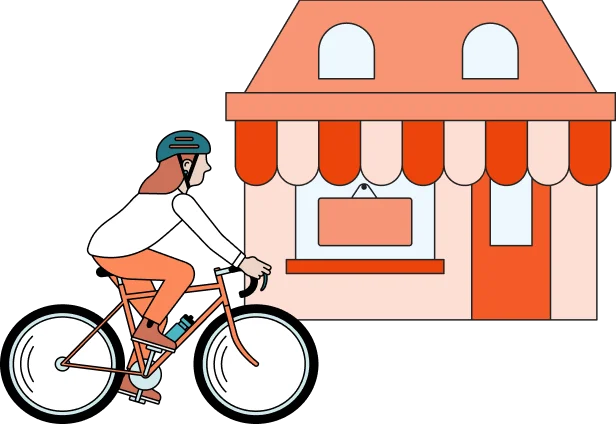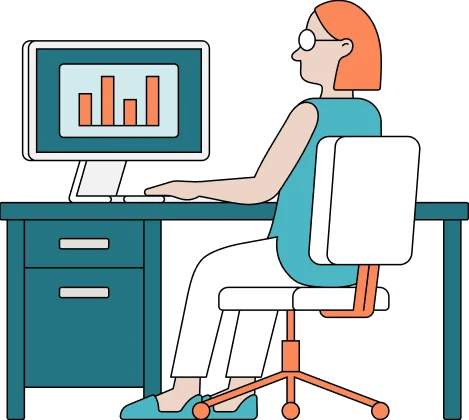Getting financing for a small business can be difficult, but knowing the common challenges can help businesses grow and expand without draining personal capital.
Small business loans are a type of financing designed specifically to help small businesses that may not otherwise qualify for a traditional business loan. These loans are available with help from the Small Business Administration (SBA), which guarantees the loans, as well as through other organizations like private investors, traditional lenders, and other programs. However, qualifying for these loans isn’t always as straightforward as it might seem.
We asked Jared Weitz, the CEO of United Capital Source, a few questions to better understand the lending landscape and what businesses can do to stay ahead.
Note: The following has been edited for space and clarity.
Who is Jared Weitz of United Capital Source?
Jared Weitz is the CEO of United Capital Source, a company dedicated to connecting small business owners with financing that meets their needs and helps them achieve their goals. He’s been involved in the financial services industry for nearly 20 years and specializes in helping businesses with leasing, merchant services, mortgages, and more.

The state of small business lending in 2025
Weitz: According to recent census data, 5.5 million new small business applications were filed in 2023 alone. That’s a major increase over previous years, but with the current economic challenges of 2025 developing, getting loans to bring startups to life may not be as simple as it used to be.
Given current market volatility, how would you describe the overall health of small business borrowing right now?
Weitz: Despite current challenges, the landscape of small business borrowing presents opportunities for growth and resilience. Many small businesses are finding creative financing solutions and innovative partnerships to thrive in an evolving market.
This effectively means business owners may find it easier to get loans now than in previous years. While interest rates are increasing, this also encourages businesses to explore diverse funding options, which can lead to stronger financial strategies in the long run.
Some critics say that rising rates and shrinking federal support are creating a capital winter. What’s your take on this perspective?
Weitz: While some critics consider the situation a “capital winter,” it can spur creativity and resourcefulness among small businesses. Rather than relying solely on traditional bank loans from large or national banks, small businesses are motivated to seek out unique funding avenues through networking, community support, and alternative financial products that empower them to navigate tighter times successfully.
Which industries are adapting best to tighter lending conditions, and which ones are struggling most?
Weitz: The innovation-driven tech and ecommerce industries are thriving and adapting to changes in lending conditions, showcasing their ability to evolve. These traits are essential for businesses in these sectors to overcome challenges associated with expansion, inventory management, and changing technology needs. Other sectors, like green technology and health services, are also emerging strongly.
That doesn’t mean other sectors are struggling, even if they’re in industries facing clear challenges. Businesses in struggling sectors are still finding opportunities to reimagine their business models, fostering community support, and attracting new investors.
In your opinion, could federal downsizing and a potentially tighter job market actually serve as a catalyst for small business creation, and if so, how is your firm positioning itself to support that next wave of entrepreneurs?
Weitz: Federal downsizing and a tighter job market could act as a catalyst for entrepreneurship! As more individuals explore their passions and ideas, we could see a vibrant surge of new small businesses. By providing resources and mentorship, our firm is excited to empower the next wave of entrepreneurs.
Small business trends and predictions
Though it’s impossible to know how small businesses will be impacted with changes in the economy, predictions and projected trends show that these businesses will still be able to thrive. However, the changing lending landscape may alter the way that businesses pursue growth.
With inflation still sticky and real wage growth projected to stay negative in many sectors, how do you anticipate demand for small business loans will shift over the next 12 to 24 months?
Weitz: Inflation may pose challenges, but it also creates a dynamic landscape for demand shifts. Small businesses may become more resourceful in seeking financing, and trends like increased interest in alternative funding solutions, like microloans and unsecured business lines of credit, could lead to a more diversified lending market, presenting avenues for growth and adaptation. Many alternative financing options offer flexible terms that may not be available through traditional business lines.
Are you seeing a move toward different types of borrowing, like revenue-based financing, alternative credit models, or microloans, as traditional lending tightens?
Weitz: We are beginning to see a positive shift toward alternative borrowing methods, offering flexibility that meets the needs of small businesses today. This diversification allows entrepreneurs to find tailored options that align with their unique financial situations. This, in turn, leads to more sustainable growth paths.
What economic signals are you watching most closely when deciding how to adjust lending criteria or credit risk models?
Weitz: In this evolving landscape, closely monitoring key indicators such as consumer confidence and innovative economic trends will allow lenders to stay ahead. This proactive approach helps create adaptable lending practices that align with the market, ensuring small businesses have the support they need to flourish.
How federal support for small businesses affects loans
2025 has seen a lot of changes in federal support for small businesses, namely in how tariffs affect businesses’ ability to meet customer demand. But these changes are also impacting loans. Here’s what our expert had to say.
Small businesses benefited enormously from federal programs like PPP loans and Economic Injury Disaster Loan (EIDL) during the pandemic. Without new support programs on the horizon, how do you see access to capital evolving for Main Street businesses?
Weitz: As federal support programs phase out, innovative financing solutions can emerge. Small businesses can look to local financial institutions and investment networks dedicated to supporting Main Street. This evolution can empower communities and drive economic growth at the grassroots level.
Do you foresee private lenders playing a larger role in ‘gap filling’ where government-backed loans used to be critical?
Weitz: Private lenders will likely play an increasingly critical role in bridging capital gaps. They'll have the chance to develop customized small business funding solutions that address specific needs, promoting entrepreneurship and community resilience while fostering a supportive environment for small businesses to thrive.
What responsibility, if any, do private lenders have to maintain affordability and fairness for small business borrowers in an environment of declining federal safety nets?
Weitz: Private lenders have an incredible opportunity to champion affordability and fairness, ensuring that small business borrowers are not left behind when applying for the working capital they need. By committing to transparent practices and equitable lending, they can foster a fairer landscape that encourages growth and support for emerging entrepreneurs.
The future of small business borrowing
Challenges aside, small businesses will continue to be the backbone of the United States’ economy, and with the right loans, small businesses will be able to grow, even though the landscape may change.
If you could snap your fingers and reform one part of the small business lending ecosystem—regulations, technology, credit access—what would you change?
Weitz: If I could reform one aspect of the small business lending ecosystem, I would advocate for enhanced technology integration. Tech integration could streamline processes and make funding more accessible while encouraging an environment of innovation in lending practices.
Looking out five years (or less), do you believe AI or alternative underwriting models will meaningfully close the capital access gap for underserved small businesses? If so, how?
Weitz: The potential of AI and alternative underwriting models to close the capital access gap is truly promising! These technologies can provide deeper insights into creditworthiness, allowing underserved small businesses to tap into new funding opportunities and fostering inclusivity and growth in the entrepreneurial landscape.
What advice would you give to a first-time small business borrower navigating today’s lending environment?
Weitz: My advice to first-time small business borrowers is to approach the lending process with optimism and preparation. Embrace the opportunity to build a solid business plan, and don't hesitate to seek out networking opportunities and local resources that can foster support and guidance. With the right mindset and resources, success is within reach!
Building a business is enough work as it is. We'll help you start your LLC with confidence.

How to get a small business loan in 2025
With the lending landscape changing significantly over the last few years, and with federal programs starting to phase out, finding funding can be tough. But tough doesn’t mean impossible. Here’s what small business owners can do to get an SBA loan.
1. Figure out your ideal loan amount
Business owners should have a general understanding of their funding needs before applying for a loan. Think about why you’re applying for financing and how you’ll use the money. Once you have the “why,” consider how much you’ll need to bring that vision to life.
2. Make sure your business qualifies
The SBA has a few requirements that all applicants must satisfy to be eligible for an SBA loan, regardless of the lender they use.
- The business must be in operation at the time of application.
- The company must be a for-profit business.
- It must be located in the United States.
- The business must qualify as a small business under federal guidelines.
- The business must be able to repay the loan according to the loan terms.
If your business meets those requirements, you’ll still need to meet the individual lender’s requirements to qualify for a loan. Many lenders require that the business owner have a credit score of 690 or higher to qualify.
Keep in mind that if your business doesn’t qualify for a loan, you may still be eligible to apply for a small business grant.
3. Compare lenders
Each lender sets their own requirements, and many will offer different types of loans at different interest rates. Research your options at local banks, credit unions, and large national banks, and get quotes from several lenders if possible.
Once you have the quotes, look at the amount they’re likely to qualify you for and the rates they’ll offer based on your finances and your business’s finances. You may also want to look for a lender who offers other financing options, like an unsecured line of credit or business credit card, to diversify your credit mix.
4. Get your documents together
There are a few documents you’ll need to provide to your lender, regardless of the type of Small Business Administration loan you apply for. This includes, but may not be limited to, the following.
- Personal financial statements
- Business financial statements
- Personal and business tax returns
- Your business licenses
- The SBA borrower information form
- The lease agreement for the business’s property, if applicable
- A one-year cash flow statement
Lenders may also request additional information based on your industry and their individual requirements. Speak with your loan officer to learn more about the exact documentation you’ll need to provide as part of your small business loan application.
5. Submit your application
You’ll need to fill out the application with your preferred lender and submit it for processing. Your lender will review your application and supplemental documentation in detail before they make a decision. It’s common for the process to take between 1-3 months.
Once your lender reviews the application, they’ll notify you of whether your loan application is approved or denied. If it’s denied, they’ll tell you why, and if it’s approved, they’ll send you a loan offer outlining the amount you’ll receive, the repayment terms, interest rates, and other essential information.
If you choose to accept the loan, you’ll need to fill out paperwork and close on the loan. After closing, the lender will transfer the money to you.
How can businesses increase their chances of getting a loan?
For some businesses, especially newer companies, qualifying for a loan, either through the Small Business Administration’s loan program or with a traditional bank loan, can be difficult. Here are a few tips you can use to set yourself up for success.
Focus on your credit
Many lenders expect business owners to have personal credit scores over 690 for SBA loans. More established businesses may be able to qualify for financing using their business credit score based on their business’s credit history.
If your score is too low, they may not approve your application. Before applying, check your credit score. You can check your score for free at AnnualCreditReport.com.
If your score is below 690 or is lower than you’d like, consider trying to improve your score before applying for a small business loan. There are a few different things you can do to improve your credit, including but not limited to these tips.
- Pay down existing debt. If you have outstanding loans and credit card debt, paying down those balances will reduce your debt-to-income (DTI) ratio, which can improve your score. Lenders also prefer lower DTIs and may be more willing to approve you for larger SBA-backed loans.
- Use credit cards mindfully. Instead of using your credit cards to pay for every purchase you make, use them only when necessary. If you can, pay off your cards at the end of each month. If paying off the full balance is too much, pay as much as you can reasonably afford. This will keep your credit utilization lower and may improve your score.
- Ask for credit limit increases. If you’re staying on top of your credit card payments and aren’t borrowing more than you can repay, consider asking your credit card issuer for a limit increase. If granted, the credit limit increase could reduce your credit utilization ratio and boost your score.
Formalize your business structure
Banks issuing SBA-guaranteed loans need to believe that the business they’re lending to will last long enough to repay what they borrow. One simple way to increase the bank’s confidence in your application is to formalize your business structure before you apply.
Not sure which business structure is right for you? Learn more about the different business formations available and get help filing the necessary documents with your state.
Make sure you’re in compliance
Some industries have strict compliance requirements in place. If your business isn’t meeting those requirements when you apply for an SBA-guaranteed loan, you may not qualify for the funding you need when you need it. Before you apply, make sure your company is in full regulatory compliance.
Get an employer identification number (EIN)
Your business’s employer identification number, often abbreviated as EIN, helps the IRS identify your business when you file taxes for the business or on behalf of your employees. While sole proprietors may be able to use their Social Security number instead, having an EIN is a must if you plan on creating a separate and distinct business entity or if you plan on hiring employees.
You can get an EIN online from the IRS website.
Examine your financial health
Lenders want to feel comfortable in your ability to repay what you borrow. Before you apply, take the time to look at your personal financial health and your business’s financial well-being. Look at your financial health and see if there is anything a bank or lender may take issue with. Having lots of existing debt, a history of default, or prior bankruptcies within the last 7 to 11 years could make it harder to qualify.
Create a formal business plan
When applying for a loan, it’s common for banks to ask business owners for a business plan. This plan should outline the goals of the business, how you’ll use the money, sales projections, and other factors. If you don’t already have a business plan, create one before applying for a loan. Make it as detailed as you can and provide clear and actionable steps for each part of your plan so banks can see how you’ll achieve your goals.
Invest in insurance
Many lenders require applicants to have business insurance in place at the time they apply for a small business loan. Without that insurance, the loan application may be denied. The exact insurance you’ll need will depend on your business’s unique risks. However, most businesses will need the following types of coverage.
- General liability
- Property insurance
- Workers’ compensation insurance (if hiring employees)
- Professional liability (if offering professional services)
- Commercial umbrella insurance
Your lender may request proof of insurance for each relevant policy. Your insurance agent should be able to help you get the proof you need for your loan application.

FAQs
What is the average small business loan in 2025?
The average small business loan amount in 2024 was nearly $444,000. That number may change for 2025, however.
What are the most popular industries to start a business in?
The most popular industries to start a business in for 2025 include the following.
- Health and wellness
- Artificial intelligence
- ecommerce
- Food production and food services
- Retail
- Real estate
- Personal finance
If your business operates in one of these sectors, there may be more competition. That competition could mean that your small business loan may need to go to improvements that help your brand stand out from others in your industry.
What do you need to qualify for a small business loan?
If applying for SBA financing options, borrowers need to meet SBA eligibility requirements to qualify. But in most cases, you’ll need to have these key components in place when you apply.
- A developed business plan
- An understanding of how much you need to borrow
- Business insurance
- A credit score of 690 or higher
- A business checking account that’s separate from your personal account
- The ability to repay the loan


